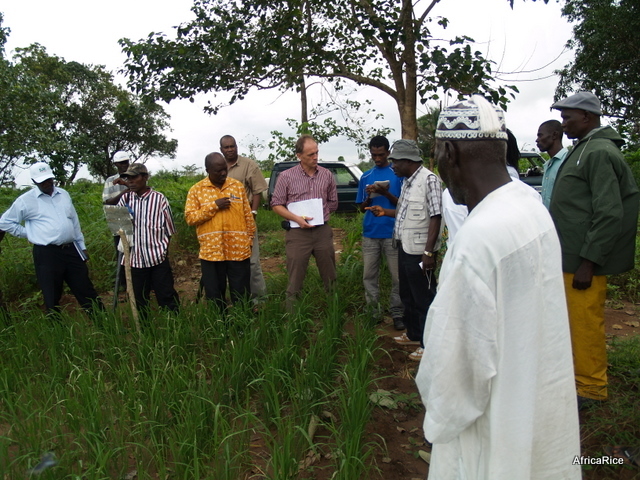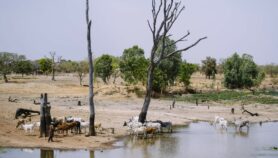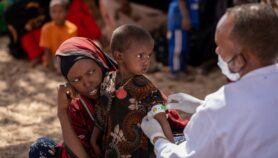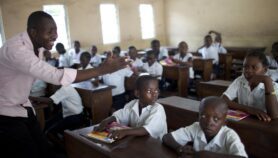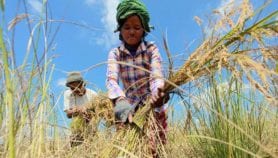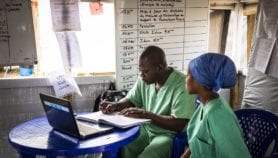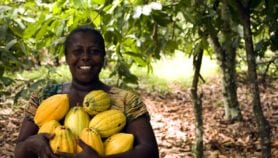By: Linda Nordling
Send to a friend
The details you provide on this page will not be used to send unsolicited email, and will not be sold to a 3rd party. See privacy policy.
Three's a crowd in a romantic relationship. But is the same true for research collaborations?
Current funding trends in Africa suggest that it is. Bilateral research programmes — whereby two countries jointly offer funding for studies in areas of common interest — are on the rise on the continent.
There are several benefits of bilateral programmes. They are easy to manage and offer relatively cheap ways of boosting international research links.
But they also pose some challenges, especially for Africa’s poorer nations.
Beating multilateralism
Although bilateral programmes probably fund more research — at least in Africa — it is usually the large, multilateral research funding programmes that get a lot of press coverage.
This is because their ambition — uniting many nations, even continents — may sound bolder than their bilateral counterparts. In Africa, an example is the European Union (EU)-funded African research grants programme run by the African Union based in Addis Ababa, Ethiopia.
But perhaps the most famous multilateral research fund is the EU's framework programme (soon to be renamed Horizon 2020), which dishes out billions of euros every year to researchers in Europe and beyond.
These programmes are complicated and costly to run. For instance, application procedures for the EU funding are notoriously complex, and the target research areas are decided by cumbersome negotiations.
By contrast, bilateral programmes are cheaper and quicker to set up. They simply require a memorandum of understanding between research funders in the partner countries. And, of course, deciding what research areas to fund is easier given that there are only two negotiating partners.
'Queen B'
In Sub-Saharan Africa, the queen of the 'bees' (bilateral research programmes) is without doubt South Africa.
The country has a long tradition of partnering with strong research countries in the developed world. In 1995 it signed a collaboration agreement with the UK. The next year it was Germany's turn. Other partners include the Czech Republic, France, Norway and Switzerland.
Recently the South African government has extended its bilateral deals to some African countries. Scientists in the country are regularly asked to pair with colleagues in countries such as Algeria, Angola, Kenya and Tanzania to carry out joint projects ranging from space science to water management.
These programmes usually follow a set formula. Projects need to have two lead investigators — one from each country. Both then submit their applications to a designated research funder in their respective countries, which coordinates their evaluation processes.
Successful teams then get funding from the funders in their respective countries. This makes managing the grants easier because money does not have to change hands between national funding agencies, which many of them don't allow.
The new crowd
But partners in emerging markets are also increasingly wooing African scientists.
The most eye-catching of these advances are carried out on a country-to-continent front.
For instance, India agreed to boost its science collaboration with Africa in 2012.
Meanwhile, China launched an ambitious plan to boost African science in 2009, with a focus on agriculture.
And in August this year, a Chinese health official said the country would extend its medical research support to Africa.
But not all fit that bill. Argentina vowed last month (September 2013) to extend its science collaboration with nine countries in Sub-Saharan Africa: Cameroon, Cape Verde, Democratic Republic of Congo, Ghana, Guinea, Kenya, Senegal, Sudan and Zambia.
Argentina's reasoning for choosing these countries was refreshingly blunt. It was 'part of its policy to seek new markets for Argentine products', said a spokesperson from the Argentinean agriculture ministry in an interview with SciDev.Net.
Losing the locals
But of all the previously mentioned examples, only South Africa's forays into the African continent qualify as intra-African collaboration. The rest falls into the usual North-South or Emerging-Developing country partnership, where one partner is financially and scientifically stronger than the other.
Even the South African joint programmes with Angola, Kenya and Tanzania would also qualify as technologically and economically uneven collaborations.
This is not a problem, but it does little to combat one of the big challenges in African science: encouraging collaborations between African researchers where neither partner is South African.
In emerging economic powers the 'average collaboration distance' between scientists in the region shrank as they turned to each other — rather than colleagues in faraway rich countries — for partnerships.
But a paper published in 2011 by researchers from the Netherlands and South Africa on this phenomenon found that in Africa, the average distance between collaborators was static — and long. Africans were still partnering with colleagues on other continents more often than with each other.
Current bilateral research programmes will make less of a dent in this trend than projects that would somehow link researchers in nearby African countries to each other — perhaps as well as with colleagues overseas.
Three's a crowd? Perhaps not….

Journalist Linda Nordling, based in Cape Town,South Africa,specialises in African science policy, education and development. She was the founding editor of Research Africa and writes for SciDev.Net, Nature and other.
This article has been produced by SciDev.Net's Sub-Saharan Africa desk.
References
1] Waltman L, Tijssen RJW, Jan van Eck N, Globalisation of science in kilometres [899kB]. Journal of Informetrics 5, 574–582 (2011)


